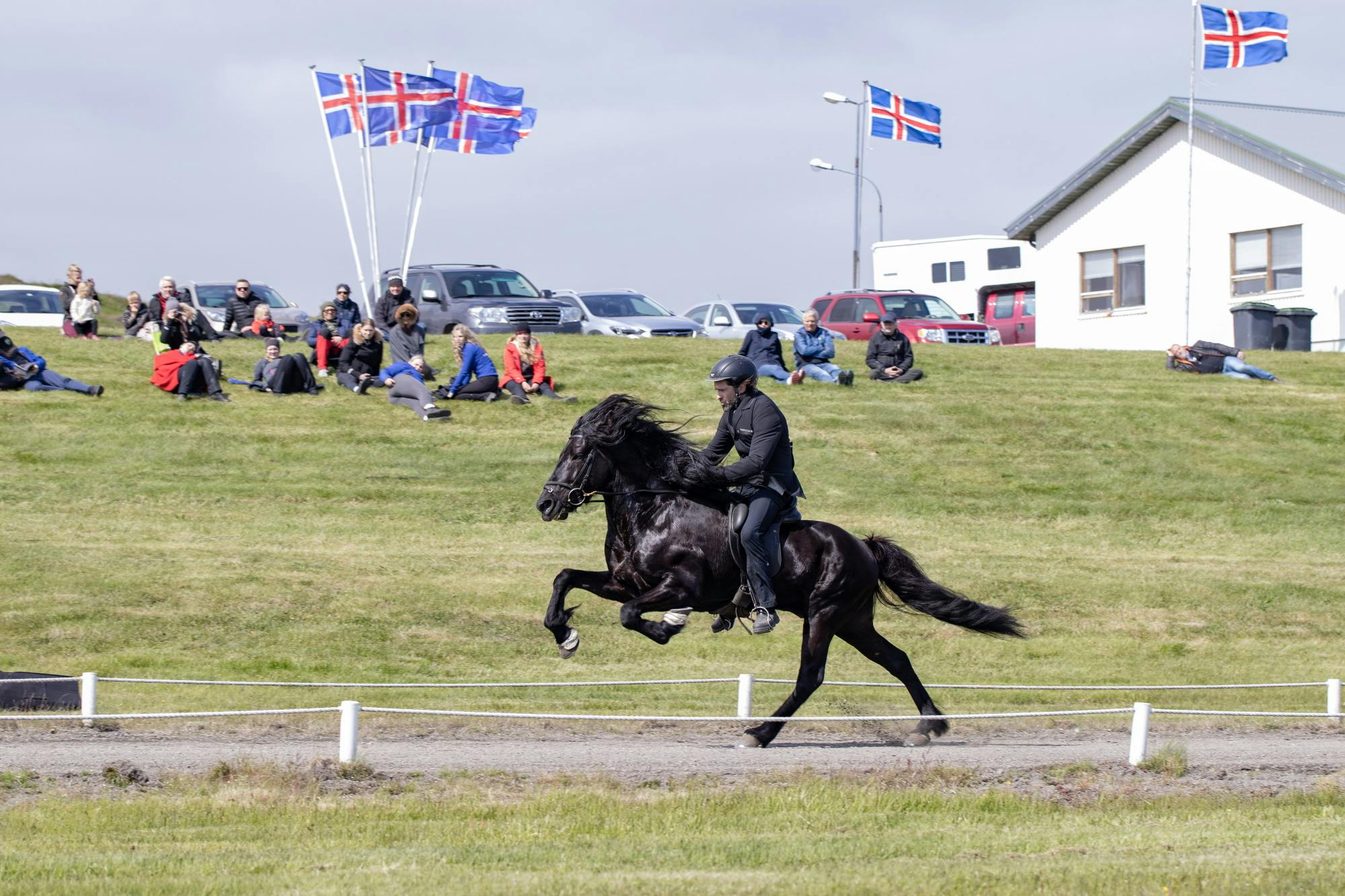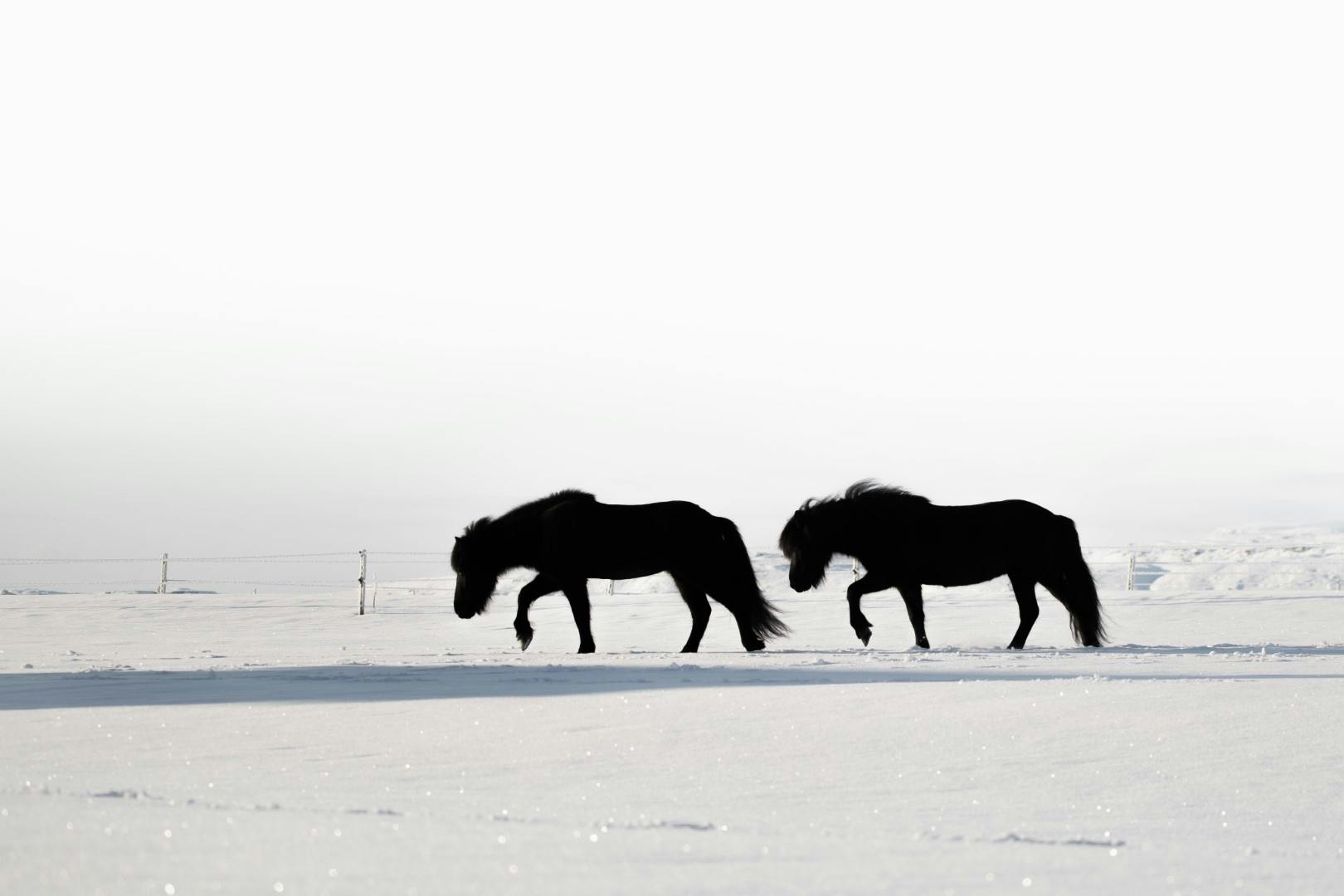
Elegant and powerful
The Icelandic horse has been bred selectively for a long time, which has improved the breed, especially over the last few decades. The official breeding goal of Icelandic horses is to produce a healthy, fertile, and durable riding horse, a robust and yet elegant and versatile horse with five excellent gaits. The conformation should offer optimal natural balance, and the movements should be supple, high and ground covering in all gaits, giving an elegant and powerful image.

Hylur frá Flagbjarnarholti, a tall, black, Icelandic stallion and Guðmar Þór Pétursson in gallop at a breeding show.
Photo: Louisa Hackl
THE TRUE ICELANDIC GÆÐINGUR
The conformation should be functional and promote the health and durability of the horse where carrying ability, natural gaiting ability
The aim is to breed a quality gaited horse that has a natural ability to carry a rider in balance, self-carriage and is beautiful when ridden, a horse that is agile, sure-footed and with good stamina – a true Icelandic gæðingur. The main goal with regards to the gaiting ability is that the gaits have correct beat and body function, the horse is moving freely in an even rhythm. The gaits should moreover possess suppleness, lightness, long strides and speed capacity.
The above text is an excerpt from a document published by FEIF
Click here

SIZE
The size of Icelandic horses can vary considerably, from just about 130 cm on highest point of withers, to over 150 cm. The average size of horses shown in breeding evaluation is now at 142 cm to the withers which is considerably taller than 30 years ago. The reason for horses growing taller is due partly to better feed, but also selective breeding.
COLOURFUL CHARACTERS
The official breeding goal is to preserve all possible varieties of coat color
The horse’s character

Viktoría Huld Hannesdóttir, 11 years old, riding the stallion Þinur frá Enni in tölt at Landsmót 2024.
Photo: Carolin Giese
TRAINING AND EVALUATION
Horses are usually started under saddle at three-and-a-half years old in the fall and given a break for one to two months before training starts again in December. Then, they are prepared for breeding evaluation shows in the spring, which start in May. In Iceland, horses are evaluated from four years of age. All breeding evaluations are registered in WorldFengur
When a horse is evaluated, a group of breeding judges (usually three) assesses the horse’s conformation from the ground, giving marks for the different traits, and then watches the horse in action on a straight track, to evaluate the horse's riding abilities.
Apart from the spring shows, breeding evaluations are organised in July during shows often called midsummer shows or during Landsmót every other year. Late summer shows are also scheduled in August. At the World Championships Landsmót